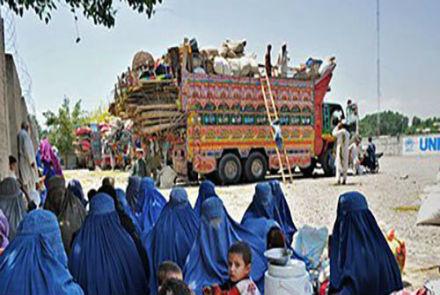More than half a million Afghans have been internally displaced by conflict so far this year, the highest number on record, the UN Office for the Coordination of Humanitarian Affairs (UNOCHA) in Afghanistan announced in a report on Wednesday.
As of 30 November, 515,815 internally displaced persons (IDPs) have been recorded as newly displaced in Afghanistan in 2016.
This surpasses last year’s record of approximately 471,000 IDPs, and is around 15 percent higher than the same time last year, according to the report.
More than 1.3 million Afghans have been internally displaced by conflict in the past five years, with severe humanitarian impact. As the conflict continues, increasing numbers of Afghans need humanitarian assistance, at the same time the humanitarian community are facing greater challenges in safely accessing vulnerable families, it said.
“When forced to leave their homes because of conflict, Afghan families face enormous challenges. They often lose their homes and livelihoods. It is not uncommon for displaced people to live in tents, and to be unable to feed their children or send them to school,” said Dominic Parker, Head of Office for UNOCHA in Afghanistan.
The record numbers continue a worrying trend of year-on-year increases of conflict-induced IDPs and a growing number living in prolonged displacement. This year, internal displacement is four times more than that recorded in 2013, and more than double that in 2014. More of Afghanistan is also affected, with a record 198 out of 399 districts reporting conflict-induced displacement so far this year, and for the first time, all 34 provinces are now hosting IDPs.
In addition to the high levels of internal displacement, the large surge of more than 600,000 Afghan registered refugees and undocumented returnees from Pakistan this year is also of concern.
Many of these returnees are vulnerable, and highly prone to becoming IDPs if the area they intend to return to is not conducive for a long-term future.
Many displaced families, often unable to return to their homes due to persistent insecurity, choose to move to Afghanistan’s major urban centers, looking for jobs, health services, and schools. Host communities in Afghanistan have been generous to IDPs and returnees, but the large influxes are putting local resources under strain.
Mark Bowden, the UN Deputy Special Representative to the Secretary-General and Humanitarian Coordinator in Afghanistan, said that with an increasing number of IDPs unable to return home, the humanitarian community, government and development partners must work together to effectively address the growing issue of Afghan families living in long-term displacement.
“I am concerned these record figures show not just an alarming number of new IDPs, but a longer term crisis where increasing numbers of families in Afghanistan are facing prolonged displacement.” said Bowden.
“We must collectively rethink the manner in which we provide assistance and ensure that vulnerable displaced families not just receive lifesaving, emergency humanitarian assistance, but support that delivers a real opportunity for IDPs to rebuild their lives for the long-term.”
In the interim, the humanitarian community is responding to address the immediate and urgent needs of IDPs and returnees, including through the Flash Appeal. As of 30 November, the US$152 million USD request was 54 percent funded in pledges and contributions. This will help save lives over winter, including by providing food assistance, shelter, health care, water and sanitation, and for returnees, better services at the border.


